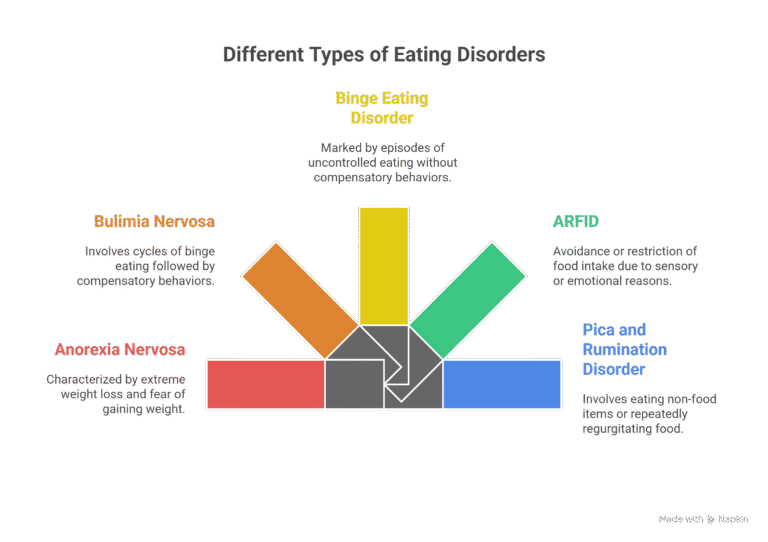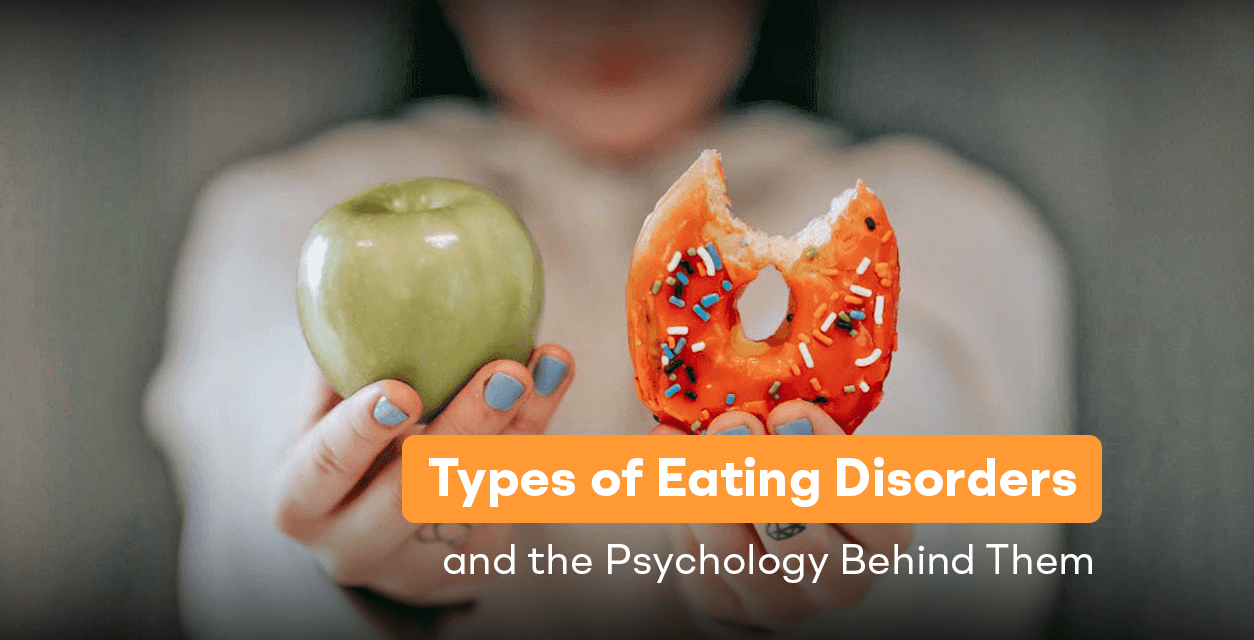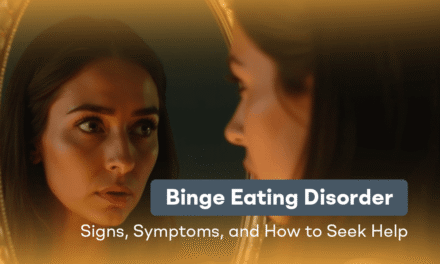Sometimes, food becomes more than just fuel for your body. It is comforting when we are feeling low or out of control, when everything else feels messy. And most people do not even realize when this connection starts to change. What begins as small habits initially can slowly turn into something deeper.
The psychology behind eating disorders reveals that they are not only about food or weight. Instead, they also stem from unexpressed emotions and unresolved thoughts that a person struggles to manage or articulate. That’s the reason why people with different types of eating disorders often have fear, stress, or pressure to be perfect.
Once you understand this, it will help you to see that these struggles come from pain and not choice. Also, by taking a look past the surface, we start to see people who are hurting and need care, not judgment. In this blog, we will discuss different types of eating disorders and the science behind them to understand them better. Let’s dive in!
Different Types of Eating Disorders

1. Anorexia Nervosa
Anorexia is wrongly assumed to be an excessive desire to be thin. In reality, it is a lot more complicated. Individuals who suffer from anorexia utilize control of food to deal with anxiety or emotional turmoil. Restricting food provides a feeling of safety when life seems unpredictable.
Underneath the physical symptoms, there is usually profound fear. Fear of loss of control. Fear of judgment. Fear of inadequacy. Therapy assists individuals in reconnecting with their bodies and letting go of the emotions that established that sense of need for control in the first place.
2. Bulimia Nervosa
Bulimia exists in extremes. It is a cycle of binging and purging, either vomiting, fasting, or overexertion. The binge is a reprieve. The purge is guilt and the need to make it right.
This is a pattern reflecting an inner struggle. Individuals are usually conflicted between comfort and shame, control and chaos. In therapy, they learn to recognize these feelings and substitute guilt with compassion. Recovery starts when they learn softer ways of coping with emotional pain.
3. Binge Eating Disorder
Binge eating disorder is a repeated behavior of consuming a large quantity of food, usually in seclusion. Following this, individuals feel shame or sadness. There is no purging, unlike with bulimia.
Food turns into a comforting force when feelings feel like too much. It fills the void left by loss, loneliness, or tension. Therapy can reveal what prompts these situations and teach coping more healthily.
4. Avoidant or Restrictive Food Intake Disorder (ARFID)
ARFID is not about body image. It’s usually based on fear. Some individuals fear the taste of many foods, some fear the texture of many foods, and some even fear eating itself. It may begin in childhood and result in severe nutritional issues.
Individuals with ARFID eating disorder might not necessarily know why they do not like food. Their reactions are usually related to sensory distress or aversive histories. Treatment involves establishing food safety, desensitisation, and gradually regaining trust in the act of eating.
5. Pica and Rumination Disorder
Pica is the eating of non-food substances such as paper or chalk. It can be a sign of nutritional deficiencies or emotional distress. Rumination disorder is repeatedly regurgitating and re-chewing food, which is usually done unconsciously.
These disorders illustrate how much the mind and body are interconnected. They remind us that food and mental health have an impact on each other in tremendous ways.
OSFED: Other Specific Feeding and Eating Disorder
Not everybody fits into one category. Some individuals present a combination of symptoms that fall short of one particular diagnosis. This is referred to as OSFED.
OSFED demonstrates the individual and intricate nature of these problems. Each experience differs. What is most important is care, understanding, and support.
The Psychology Behind Eating Disorders
So, by taking a closer look at these disorders, you might have understood by now that they aren’t really about food. Instead, they’re about feelings, beliefs, and experiences. And their causes are deeper as they emerge from conflicts with identity, self-esteem, and trauma. Restricting or binging provides temporary relief, but the root of the problem is still deeper.
- Also Read: The Many Voices of Eating Disorders – What Are Eating Disorders
Therapy helps in exploring these feelings and thoughts underneath the unusual eating behavior. By examining body image, perfectionism, and self-acceptance, people get to know what actually fuels their pain. Healing through awareness and compassion, not control.
- You can find out more about our services at: Insight Psychological Group.
Healing Beyond the Diagnosis
Healing is a process that takes time. It is definitely not a linear route. Some days are tougher than others. But real healing occurs only with patience and support. Through therapy, people eventually come to understand that they are not defined by food or how they look.
Therapy makes them learn to trust themselves once more. And learning about the various forms of eating disorders is merely the beginning. The true journey starts when we look within to identify the thoughts and emotions behind the struggle. Each emotion tells a story. Each movement towards awareness is a movement towards liberation.




